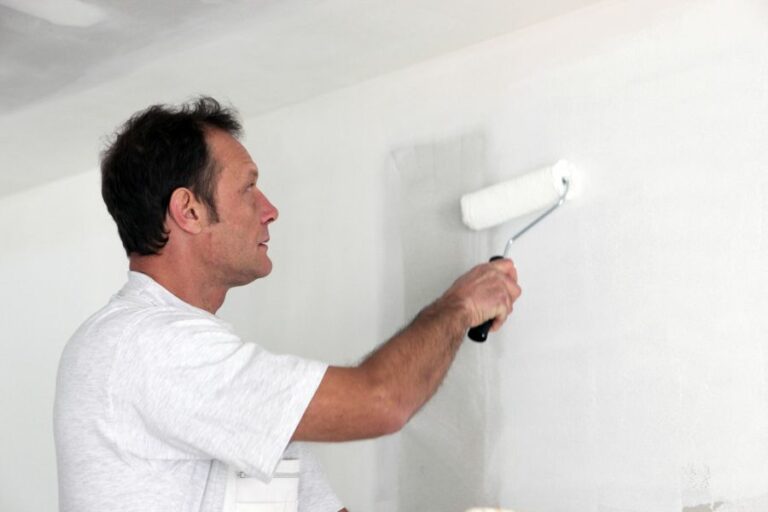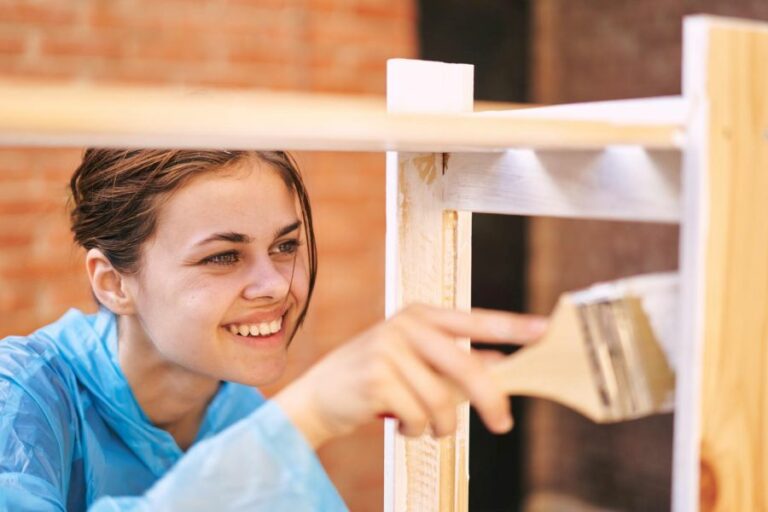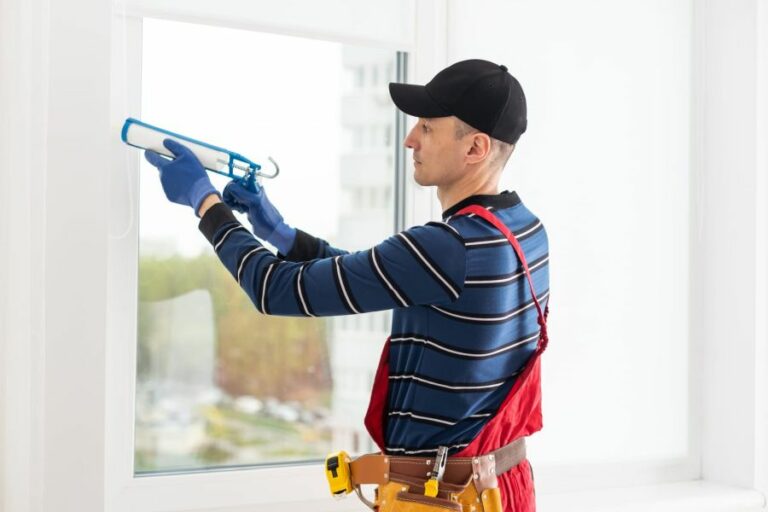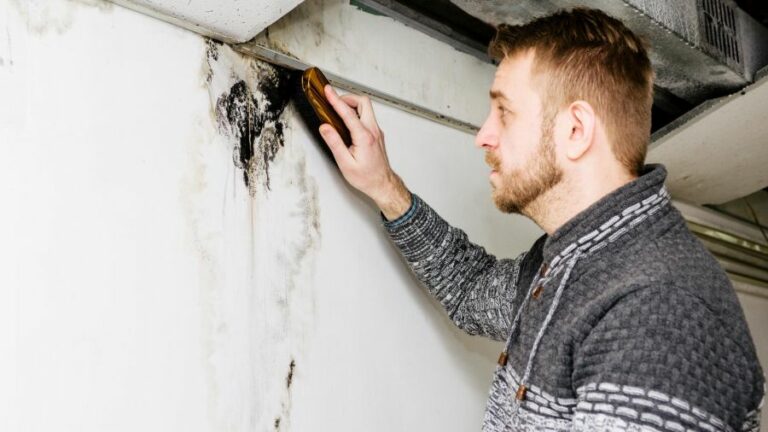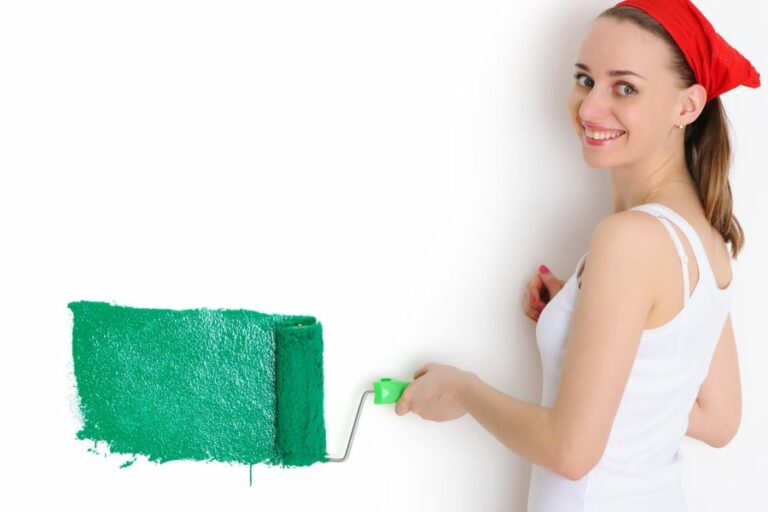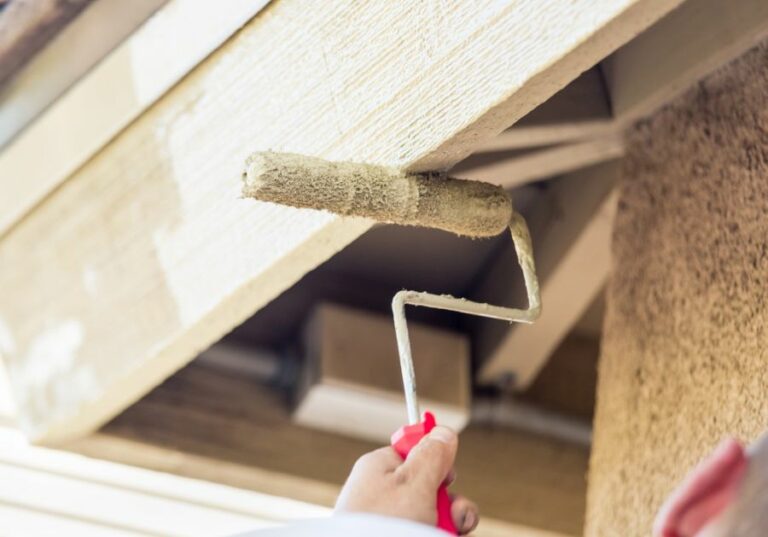Primer Selection And Application For Different Surfaces
When it comes to painting, the key to achieving a flawless finish lies in the proper selection and application of primer on different surfaces. Fortunately, we’re here to help you navigate this crucial step, ensuring your painting project is a success. With a wealth of knowledge and experience under our belt, we’re confident in providing you with the essential tips and techniques to make your DIY endeavors a breeze.
Primer selection and application for different surfaces:
To select and apply primers for different surfaces, choose from oil-based, water-based, shellac-based, or epoxy primers based on the surface material, its condition, and paint type. Ensure the surface is clean and dry before applying, apply an even coat, and allow proper drying time before applying the topcoat.

Discover the secrets to perfect primer selection and application for various surfaces! Delve into our comprehensive guide that covers everything from choosing the right primer to industry-approved techniques, ensuring flawless results every time. Read on for expert insights and paint like a pro!
Contents
- 1 Choosing and Applying Primers for Various Surfaces
- 2 Identifying the Right Primer for Different Surfaces
- 3 The Versatility of Primer: Is It Suitable for All Surfaces?
- 4 Primer Compatibility: Can It Adhere to All Surfaces?
- 5 Primer’s Role in Smoothing Out Uneven Surfaces
Choosing and Applying Primers for Various Surfaces
Selecting the right primer and applying it correctly is essential for a successful paint job.
• Types of Primers and Their Uses
There are numerous primers available in the market, but they can generally be divided into four main categories:
– Oil-Based Primers
These primers are made using a mixture of alkyd resins, solvents, and additives. They provide excellent adhesion, stain-blocking properties, and a high level of durability. They are most commonly used on wood, metal, and previously painted surfaces.
However, they are not suitable for use in masonry, brickwork, or concrete.
– Water-Based Primers
Also known as latex primers or acrylic primers, these products are composed of water-soluble polymers, pigments, and additives. They offer good adhesion, quick-drying properties, and easy clean-up.
Water-based primers can be used on a variety of surfaces, including wood, drywall, masonry, and previously painted surfaces. They are also environmentally friendly and have lower VOC (volatile organic compounds) levels compared to oil-based primers.
– Shellac-Based Primers
These primers are based on a natural resin derived from the lac insect and are dissolved in alcohol to form a high-quality coating. Although less commonly used than oil or water-based primers, shellac primers offer outstanding stain-blocking properties, excellent adhesion, and fast drying times.
They are best suited for sealing wood, covering water stains, and preventing the release of wood tannins, which can cause discoloration.
– Epoxy Primer
Epoxy primers are two-component primers that consist of a resin and a hardener. They provide excellent adhesion, chemical resistance, and durability, making them ideal for use on metal surfaces, particularly those prone to rust and corrosion, such as steel and galvanized metal.
• Primer Selection for Different Surfaces
– Priming Wood Surfaces
When preparing wood surfaces for painting, ensure they are clean, dry, and free of any loose debris, dust, or dirt. Applying an oil-based primer is recommended to seal the wood, prevent tannin bleed, and provide good adhesion for the topcoat.
However, if you prefer a more environmentally friendly option, a water-based primer can also be an effective choice.
– Priming Metal Surfaces
To prime metal surfaces, start by thoroughly cleaning them and removing any rust, corrosion, or loose paint. Then, apply a rust-inhibitive metal primer to protect the surface from corrosion and provide a strong, stable base for the topcoat.
Epoxy primers are a great option for metal, especially for surfaces that will be exposed to harsh conditions or chemicals.
– Priming Masonry, Concrete, and Brick Surfaces
Before priming masonry, brick, or concrete surfaces, ensure they are completely dry and free of any dirt, dust, or efflorescence. A water-based, alkali-resistant primer should be used to provide sufficient adhesion and prevent the topcoat from being affected by the high pH levels found in these surfaces.
– Priming Drywall Surfaces
New, uncoated drywall should be primed with a dedicated drywall primer, which is specifically designed to provide an even, consistent base for the topcoat. These primers are usually water-based and offer good adhesion and a smooth finish.
– Priming Previously Painted Surfaces
When priming a previously painted surface, it is essential to check whether the existing paint is oil-based or water-based. If unsure, you can perform a simple test using rubbing alcohol. If the paint softens, it is likely water-based; if it remains unaffected, it is oil-based.
For compatibility, apply a water-based primer over water-based paint and an oil-based primer over oil-based paint.
• Primer Application Tips
- Always follow the manufacturer’s instructions on the primer can
- Ensure the surface is clean, dry, and free of any debris or contaminants
- Use a brush, roller, or sprayer for applying the primer, depending on your preference and the size of the surface
- Apply an even, consistent coat of primer, avoiding runs, sags, and excessive build-up
- Allow proper drying time before applying the topcoat
In conclusion, selecting the appropriate primer for your specific surface is crucial for achieving a high-quality, long-lasting paint job. Consider the substrate material, its condition, and the type of paint you plan to use when choosing the right primer.
Always follow the manufacturer’s instructions and take your time when applying the primer for the best possible results.
Identifying the Right Primer for Different Surfaces
Priming a surface before painting is an essential step to ensure optimal adhesion and durability of the paint. Primers are specially formulated to even out the surface, provide a proper base, and help achieve a long-lasting finish.
However, to select the best primer for your project, it is crucial to understand the specific surface you are working with and the correct primer to use.
• Primers for Bare Wood
If you are painting on bare wood, you would ideally want to use an oil-based wood primer or a high-quality water-based wood primer. Most professional painters recommend using an oil-based wood primer because it penetrates the wood fibers better and provides a more durable base for your topcoat.
A popular choice for wood priming is Zinsser Cover Stain, an oil-based primer that dries quickly and provides excellent adhesion.
Alternatively, you can use a high-quality water-based wood primer, such as an acrylic primer, which is low-odor and easy to clean up. One such product is “Kilz 2”, a fast-drying primer with excellent opacity and adhesion to wood surfaces.
• Primers for Drywall
When working with new or repaired drywall, it is essential to use a drywall primer to seal the porous surface and prevent the paint from being absorbed unevenly.
Water-based PVA (polyvinyl acetate) drywall primers are specially formulated for drywall surfaces and are widely recommended for their sealing abilities.
One exemplary PVA primer is Glidden PVA Drywall Primer, which has excellent sealing properties and provides a perfect base for your topcoat. Another option is Kilz PVA Drywall Primer, which is also specifically designed for new drywall surfaces and ensures a consistent finish.
• Primers for Masonry Surfaces
When painting an uncoated masonry surface like concrete or brick, it is critical to use a masonry primer to ensure proper adhesion, prevent efflorescence, and protect against moisture ingress. A high-quality water-based or acrylic latex primer is usually the top choice for its durability and breathability.
For instance, consider the Sherwin-Williams Loxon Masonry Primer, which is specifically designed for masonry surfaces and provides excellent adhesion and alkali resistance.
Another tried and tested product is Dunn-Edwards ENSO, an acrylic masonry primer that offers long-lasting durability and outstanding sealing properties.
• Primers for Metal Surfaces
When painting metal surfaces, it’s crucial to use a corrosion-resistant primer that prevents rust and provides excellent adhesion for your topcoat. There are three popular options for metal surfaces: latex, oil-based, and epoxy-based primers.
Latex metal primers, like Rust-Oleum Stops Rust Clean Metal Primer, are water-based solutions that are easy to apply and resist chipping and peeling.
Oil-based metal primers, such as Rust-Oleum Protective Metal Primer, offer strong adhesion and rust resistance but are challenging to clean up and can have high levels of VOCs.
Epoxy-based primers are the most durable option, providing excellent adhesion and corrosion resistance. One example is the PPG Amerlock 400, which is designed specifically for metal surfaces that require the highest level of protection.
• Primers for Plastic Surfaces
Priming plastic surfaces can be challenging, as traditional primers may not adhere properly to the smooth, non-porous plastic. A specially formulated plastic primer is necessary to create a solid base for your topcoat.
Water-based acrylic bonding primers, such as Krylon Fusion for Plastic, are designed to adhere to a variety of plastic surfaces and form a strong bond. Another option is Rust-Oleum Specialty Plastic Primer, which is also suitable for painting on plastic surfaces.
In conclusion, selecting the right primer for your surface is essential for achieving a long-lasting and professional-looking paint job. Knowing your surface materials and choosing a primer designed for that specific application makes all the difference in a successful project.
Surface Type | Primer Type |
|---|---|
Wood | Oil-based or latex primer |
Metal | Oil-based primer, zinc chromate primer (for aluminum), or rust-resistant primer (for rusty surfaces) |
Plastic | Plastic-compatible oil-based or latex primer |
Masonry (brick, concrete, stucco) | Masonry primer or alkali-resistant latex primer |
Drywall | PVA (polyvinyl acetate) primer, latex primer, or drywall primer |
Glossy surfaces (tile, laminate, glass) | Bonding primer or adhesion-promoting primer |
The Versatility of Primer: Is It Suitable for All Surfaces?
Primer is a bonding agent that helps paints adhere better to surfaces, ensuring a longer-lasting and more professional finish. It evens out the porosity of the surface and creates a solid foundation for the paint to bond with. However, not all primers are suitable for every surface.
• Priming Different Surface Types
– Wood surfaces
Wood is a porous, absorbent material that requires a suitable primer to reduce absorption and provide a smooth surface for painting.
For the best results on wooden surfaces, an oil-based or water-based primer should be used. These primers penetrate the wood and create a good bond with the paint to ensure a durable finish.
Recommended Primer: Oil-based or Water-based Primer
– Metal surfaces
Unpainted or rusted metal surfaces require a dedicated metal primer. This ensures proper adhesion, rust prevention, and a surface appropriate for painting. Metal primers typically contain rust inhibitors and other additives that prevent metal corrosion and provide a suitable base for paint.
Recommended Primer: Metal Primer or Rust-Inhibiting Primer
– Plastic surfaces
Primers specifically designed for plastic surfaces should be used, as other primers may not adhere well to these surfaces. A plastic primer ensures proper adhesion and contributes to a long-lasting and durable finish on different types of plastic materials.
Recommended Primer: Plastic Primer
– Concrete and masonry surfaces
Concrete and masonry surfaces tend to be porous and absorbent, so they require specific primers that even out their porosity and provide a strong bond for the paint. Concrete and masonry primers penetrate deeply into the surface, creating a stable foundation to which paint can adhere.
Recommended Primer: Concrete and Masonry Primer
– Drywall surfaces
Drywall surfaces are quite porous and require a primer to ensure even coverage and adhesion of paint. A dedicated drywall primer will create an even surface for paint, helping avoid flashing or a blotchy appearance of the paint.
Recommended Primer: Drywall Primer
– Wallpapered and textured surfaces
To paint over wallpaper or textured surfaces, a primer is necessary to ensure proper adhesion and create a smooth surface for paint. There are specific primers designed for wallpapered surfaces that will prevent the paint from softening the wallpaper adhesive, causing it to peel or bubble.
Recommended Primer: Wallpaper Primer
– Glass and ceramic surfaces
Painting glass and ceramic surfaces can be challenging due to their non-porous and smooth nature. A primer specifically designed for these surfaces should be used to ensure proper adhesion and prevent peeling or flaking.
Some glass and tile primers are specially formulated to bond with the glossy surface of the glass and ceramic materials.
Recommended Primer: Glass and Tile Primer
• Choosing the Right Primer for Your Surface
In addition to surface type, there are other factors to consider when choosing a primer. These factors include environmental conditions, level of surface preparation, and desired finish.
– Oil-based vs. Water-based Primers
Oil-based primers offer excellent adhesion, good stain-blocking properties, and resistance to peeling. They are also beneficial for use on surfaces that are exposed to certain environmental factors, such as extreme heat or cold, or areas where moisture is a concern.
However, oil-based primers have high levels of volatile organic compounds (VOCs) and may require additional ventilation during application.
Water-based primers, also known as latex or acrylic primers, are fast-drying and easy to clean up with water. These primers have lower VOC levels and are generally more environmentally friendly than oil-based primers.
Water-based primers are suitable for most surfaces, but they may not provide the same level of stain-blocking and resistance to peeling as oil-based primers.
– Exterior vs. Interior Primers
Primers designed for exterior use are formulated to withstand weather conditions such as sunlight, rain, and contaminants. They generally have added mildewcides and offer better resistance to moisture, providing a durable and long-lasting finish.
Interior primers are designed specifically for indoor use and may not provide the same level of durability and resistance to environmental factors as exterior primers. When selecting a primer, always make sure to use the appropriate product for your project’s location.
– Stain-blocking Primers
When painting over surfaces with stains or colored markings, a stain-blocking primer may be necessary. These primers are designed to cover stains and prevent them from bleeding through the paint, ensuring a clean, professional finish.
Recommended Primer: Stain-blocking Primer
– Self-priming Paints
Some paints on the market claim to be self-priming, meaning that they contain both primer and paint in one product. While these paints can save time and effort, they may not always provide the same level of adhesion, coverage, and stain blockage as using a separate primer and paint.
For challenging surfaces or projects where a professional finish is required, using a dedicated primer is recommended.
In conclusion, primer plays a vital role in ensuring proper adhesion, coverage, and durability of paint projects. Selecting the appropriate primer for the surface type and project requirements is essential.
By considering factors such as surface material, environmental conditions, and desired finish, you can choose the right primer to achieve a professional and long-lasting paint job.
Primer Compatibility: Can It Adhere to All Surfaces?
A primer is an essential tool when it comes to painting for both professionals and DIY enthusiasts. However, its bonding capabilities can vary depending on the surface material, preparation, and type of primer used.
• Understanding Primer and Its Purpose
A primer is a preliminary coat of paint that is applied to surfaces before the final paint color. Its primary purpose is to:
- Improve adhesion between the surface and the topcoat
- Seal porous surfaces
- Block stains, odors, and discoloration
- Create a consistent base for the final color
Using the right primer can enhance the durability and appearance of your paint job. However, not all primers are created equal, and their bonding abilities depend on several factors.
• Factors Affecting Primer Bonding
– Surface Material
Different materials have distinct characteristics that can influence primer adhesion. For instance, porous surfaces, such as wood or drywall, require a primer to seal pores and create a smooth, even surface.
On the other hand, smooth and non-porous surfaces, such as plastic or metal, may need a primer specifically designed for improved adhesion.
– Surface Preparation
Proper surface preparation is vital to ensure primer adhesion. This process typically involves cleaning the surface, removing any debris or loose particles, and repairing any damage. Additionally, some surfaces may require sanding to roughen them up, creating a better surface for adhesion.
– Type of Primer
Various primers are available and are designed for specific surfaces or situations:
- Latex primer: Best for porous materials, such as drywall or masonry, and water-resistant surfaces like galvanized metal or aluminum.
- Oil-based primer: Suitable for surfaces with stains, odors, and discoloration, and for most woods, except those with high tannin content, like cedar or redwood.
- Shellac primer: Superior stain-blocking capabilities and works well on surfaces with high tannin content, severe stains or odors, and can be used on both porous and non-porous surfaces.
- Adhesion primer: Ideal for difficult surfaces, such as plastic, laminate, and glossy surfaces, this primer is formulated explicitly for improved bonding.
• Preparing Surfaces for Primer Application
To achieve the best results, follow these tips for preparing various surfaces:
– Wood
- Sand the surface with medium-grit sandpaper and then with fine-grit sandpaper to smooth and create a surface for better adhesion.
- Remove any dust and debris using a damp cloth or vacuum.
- Repair any damages, such as holes or cracks, with wood filler and sand again once dry.
– Drywall
- Fill any holes or dents with spackling paste, and sand with medium-grit sandpaper once dry.
- Remove dust with a damp cloth or vacuum.
- For new drywall, use a high-quality latex primer to seal and provide an even foundation.
– Masonry
- Clean the surface with a wire brush to remove any loose particles or dirt.
- Remove any efflorescence (white, powdery deposits) with a suitable cleaner, following the manufacturer’s instructions.
- Use a masonry primer specifically designed for this type of surface.
– Metal
- Remove any rust or paint using a wire brush or sandpaper.
- Clean the surface with a solvent, such as mineral spirits, to remove any grease or dirt.
- Apply a rust-inhibitive primer if the metal is prone to rusting.
– Plastic, Laminate, or Glossy Surfaces
- Lightly sand the surface with fine-grit sandpaper to create a better bond.
- Clean the surface with a solvent or an appropriate cleaner.
- Use an adhesion primer designed to bond with these materials.
• Conclusion
While it may be tempting to think that primer will bond to any surface, the truth is that various factors can affect primer adhesion. Selecting the right primer, properly preparing the surface, and understanding the intricacies of the surface material will significantly impact the quality and longevity of your paint job.
Primer’s Role in Smoothing Out Uneven Surfaces
When it comes to painting uneven surfaces, one of the most common questions asked is whether or not primer can effectively fill and level out imperfections.
• The Role of Primer in Painting Projects
To better understand the capabilities of primer, let’s first examine its primary functions in a painting project. A primer serves as a preparatory coating applied to surfaces before the application of paint. Its main purposes are to:
- Improve adhesion of paint
- Enhance paint durability
- Seal porous surfaces
- Block stains
- Provide a uniform base for the paint color
It’s worth mentioning that while primer can indeed adhere to uneven surfaces, the level of filling and smoothing is largely dependent on the type of primer and the extent of the surface imperfections.
• Types of Primers and their Effectiveness in Filling Uneven Surfaces
There are three main types of primers: oil-based, latex-based, and shellac-based. Each type has its own set of characteristics and filling capabilities.
– Oil-Based Primer
Oil-based primers are known for their excellent adhesion and stain-blocking properties. They are suitable for both interior and exterior surfaces and can be used on a variety of materials such as wood, metal, and masonry.
However, when it comes to filling small cracks and leveling uneven surfaces, oil-based primers are not the most effective option as they tend to have a thinner consistency.
– Latex-Based Primer
Latex-based primers, also known as water-based primers, are a more environmentally friendly option and have a faster drying time compared to oil-based primers. They also provide good adhesion and are suitable for a wide range of surfaces.
However, just like oil-based primers, latex-based primers do not provide significant filling and leveling properties.
– Shellac-Based Primer
Shellac-based primers are known for their exceptional stain-blocking capabilities and excellent adhesion. They have a thicker consistency compared to their oil- and latex-based counterparts, which makes them slightly more effective in filling small imperfections on surfaces.
However, they still might not be sufficient for addressing larger cracks or significant surface unevenness.
• Practical Solutions for Uneven Surfaces
While primer has several essential functions in a painting project, achieving a perfectly smooth and even surface requires some additional steps before applying the primer itself. Here are some recommendations for dealing with uneven surfaces:
1. Surface Preparation
Before even considering the application of primer, ensure the surface is properly prepared. This involves:
- Cleaning the surface to remove any dirt, grease, or debris
- Sanding uneven or high points on the surface (refer to this article from Family Handyman on how to choose the right sandpaper grit for the job)
- Repairing any cracks, dents, or holes with a suitable filler or putty
- Repeating the sanding process, if necessary, to level out the repaired areas
2. Choose the Right Primer
Although primers are not specifically designed to fill and level uneven surfaces, some options provide more filling capabilities than others. As mentioned earlier, shellac-based primers, in general, have a thicker consistency, which provides slightly better filling compared to oil- and latex-based primers.
3. Apply Multiple Primer Coats
Applying multiple coats of primer can help enhance its filling properties, allowing it to cover small imperfections more effectively. It is crucial to allow each coat to dry thoroughly before applying the next, and sanding in between coats may be necessary to achieve the smoothest finish possible.
4. Use a High-Quality Paint
Lastly, selecting high-quality paint can significantly contribute to achieving a smooth and even finish. High-quality paints typically have better pigmentation, superior adhesion, and higher durability, which can help conceal any remaining surface imperfections after primer application.
• In Conclusion
While primer plays a vital role in ensuring an even and durable paint finish, it is not the most effective solution for filling significant uneven surfaces.
Proper surface preparation, using the right primer and paint, and applying multiple primer coats are crucial for achieving the smoothest finish possible on uneven surfaces.
By following the recommendations outlined above, you can successfully tackle any surface imperfections and achieve professional-looking results in your painting projects.

